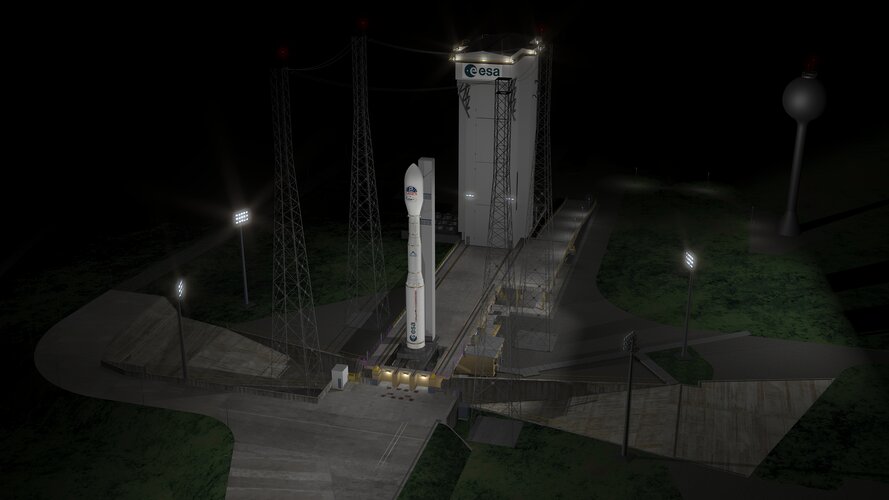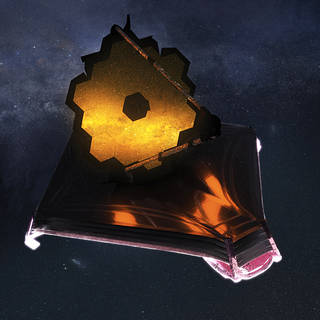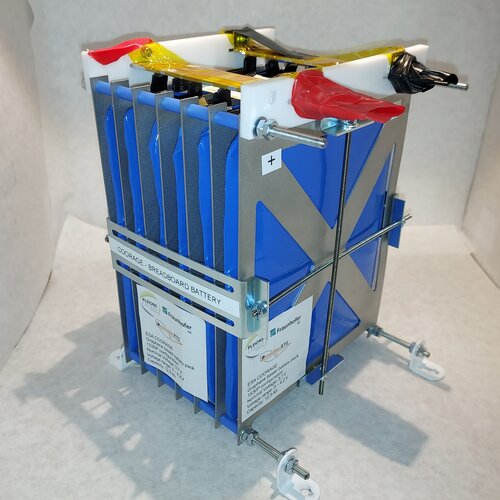
Copernical Team
SpaceX ties record for reused Falcon 9 rocket on 50th Starlink launch
 SpaceX launched one of its Falcon 9 rockets for the 13th time Thursday morning, tying a company record for the reusable rocket.
The California space exploration company's Falcon 9 rocket conducted a perfect launch, carrying 53 of its Starlink satellites from Space Launch Complex 40 at Cape Canaveral Space Force Station in Florida.
This was the 50th launch of Starlink satellites f
SpaceX launched one of its Falcon 9 rockets for the 13th time Thursday morning, tying a company record for the reusable rocket.
The California space exploration company's Falcon 9 rocket conducted a perfect launch, carrying 53 of its Starlink satellites from Space Launch Complex 40 at Cape Canaveral Space Force Station in Florida.
This was the 50th launch of Starlink satellites f SwRI-led study provides new insights about surface, structure of asteroid Bennu
 When NASA's OSIRIS-REx spacecraft collected samples from asteroid Bennu's surface in 2020, forces measured during the interaction provided scientists with a direct test of the poorly understood near-subsurface physical properties of rubble-pile asteroids. Now, a Southwest Research Institute-led study has characterized the layer just below the asteroid's surface as composed of weakly bound rock f
When NASA's OSIRIS-REx spacecraft collected samples from asteroid Bennu's surface in 2020, forces measured during the interaction provided scientists with a direct test of the poorly understood near-subsurface physical properties of rubble-pile asteroids. Now, a Southwest Research Institute-led study has characterized the layer just below the asteroid's surface as composed of weakly bound rock f NASA's CAPSTONE Pulls Off First Targeting Maneuver on Journey to the Moon
 NASA's CAPSTONE successfully completed its first trajectory correction maneuver, which started at 11:30 a.m. EDT Thursday. This is the first in a series of thruster burns over the next few months to more accurately target CAPSTONE's transfer orbit to the Moon. The maneuver lasted just over 11 minutes and changed the spacecraft's velocity by about 45 miles per hour (about 20 meters per second). C
NASA's CAPSTONE successfully completed its first trajectory correction maneuver, which started at 11:30 a.m. EDT Thursday. This is the first in a series of thruster burns over the next few months to more accurately target CAPSTONE's transfer orbit to the Moon. The maneuver lasted just over 11 minutes and changed the spacecraft's velocity by about 45 miles per hour (about 20 meters per second). C A four-stroke engine for atoms
 If you switch a bit in the memory of a computer and then switch it back again, you have restored the original state. There are only two states that can be called "0 and 1".
However, an amazing effect has now been discovered at TU Wien (Vienna): In a crystal based on oxides of gadolinium and manganese, an atomic switch was found that has to be switched back and forth not just once, but twic
If you switch a bit in the memory of a computer and then switch it back again, you have restored the original state. There are only two states that can be called "0 and 1".
However, an amazing effect has now been discovered at TU Wien (Vienna): In a crystal based on oxides of gadolinium and manganese, an atomic switch was found that has to be switched back and forth not just once, but twic Earth from Space: Fuerteventura and Lanzarote

Fuerteventura and Lanzarote, part of the Canary Islands lying in the North Atlantic Ocean, are featured in this false-colour image captured by the Copernicus Sentinel-2 mission.
Vega-C: watch the launch 13 July

ESA’s new medium-lift Vega-C rocket is nearly ready for its inaugural flight. You can follow live on ESA Web TV. Flight VV21 will lift off as soon as 13 July at 13:13 CEST, pending suitable conditions for launch.
Broadcast begins 12:45 CEST/11:45 BST on ESA Web TV
13:13 CEST/12:13 BST – liftoff
NASA releases James Webb telescope 'teaser' picture

NASA has a provided a tantalizing teaser photo ahead of the highly-anticipated release next week of the first deep-space images from the James Webb Telescope—an instrument so powerful it can peer back into the origins of the universe.
The $10 billion observatory—launched in December last year and now orbiting the Sun a million miles (1.5 million kilometers) away from Earth—can look where no telescope has looked before thanks to its enormous primary mirror and instruments that focus on infrared, allowing it to peer through dust and gas.
The first fully formed pictures are set for release on July 12, but NASA provided an engineering test photo on Wednesday—the result of 72 exposures over 32 hours that shows a set of distant stars and galaxies.
NASA Updates Coverage for Webb Telescope’s First Images Reveal
 NASA, in partnership with ESA (European Space Agency) and CSA (Canadian Space Agency), will release the James Webb Space Telescope’s first full-color images and spectroscopic data during a live broadcast beginning at 10:30 a.m. EDT Tuesday, July 12, from NASA’s Goddard Space Flight Center in Greenbelt, Maryland.
NASA, in partnership with ESA (European Space Agency) and CSA (Canadian Space Agency), will release the James Webb Space Telescope’s first full-color images and spectroscopic data during a live broadcast beginning at 10:30 a.m. EDT Tuesday, July 12, from NASA’s Goddard Space Flight Center in Greenbelt, Maryland. Just add graphene for greener Li-ion batteries

Harder than diamond and more electrically conductive than copper while also a million times thinner than paper: graphene is the single greatest discovery of 21st century materials science, and ESA has been working to benefit from its miraculous properties. A project to add ultra-thin graphene to traditional Lithium ion cells offers enhanced capacity and cycle life for future space batteries, which can now be manufactured in a cheaper, greener way – swapping toxic solvent for water and plant-based cellulose.
Vega-C pre-launch press briefing
 Video:
00:43:03
Video:
00:43:03
Watch the replay of the Q&A session with the media to learn more about the preparations for the upcoming launch of Vega-C. The inaugural flight of this new rocket in the Vega family is currently planned on 13 July 2022. Speakers include Stefano Bianchi, ESA Head of Flight Programmes Department, Benoit Pouffary, ESA Vega & Space Rider Launch System Engineering Manager, Ettore Scardecchia, Avio Head of Engineering and Mario Cosmo, ASI Director of Science and Research.
